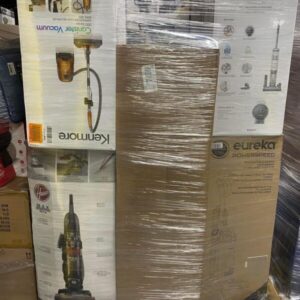General Merchandise
$9,000.00
TARGET LOADS – $9,000
General Merchandise: Apparel, Houseware, Furniture, etc.
All Case Packed and Brand New!
30 pallets per load
General Merchandise is a term that refers to a wide range of products that are sold by retailers for general use, except for groceries and food products. General Merchandise stores are usually large-scale establishments that offer a variety of goods under one roof, such as clothing, electronics, home appliances, toys, jewelry, and more. Some examples of General Merchandise retailers are Walmart, Target, and Macy’s. General Merchandise retailers aim to attract customers by providing convenience, variety, and competitive prices. They often have different departments or sections within their stores to cater to different customer needs and preferences. General Merchandise retailers face many challenges in the market, such as changing consumer trends, competition from online platforms, and inventory management. They need to constantly adapt and innovate to stay relevant and profitable in the retail industry.
General Merchandise
General merchandise is a broad term that refers to the products that are sold in retail stores, such as clothing, electronics, toys, books, household items, and more. General merchandise can be classified into different categories based on their characteristics, such as hard goods, soft goods, consumables, and seasonal goods. Hard goods are durable products that last for a long time, such as appliances, furniture, tools, and hardware. Soft goods are products that are made of fabrics or textiles, such as clothing, bedding, towels, and curtains. Consumables are products that are used up or disposed of after use, such as food, beverages, toiletries, and cleaning supplies. Seasonal goods are products that are in high demand during certain periods of the year, such as holiday decorations, costumes, gardening supplies, and sports equipment.
General merchandise is an important segment of the retail industry, as it accounts for a large share of the sales and profits of many retailers. General merchandise retailers can be divided into different types based on their size, product assortment, price range, and target market. Some examples of general merchandise retailers are department stores, discount stores, warehouse clubs, supercenters, specialty stores, and online retailers. Each type of retailer has its own advantages and disadvantages in terms of attracting customers, competing with other retailers, and managing inventory and operations. General merchandise retailers face various challenges and opportunities in the dynamic and competitive retail environment. Some of the factors that affect the performance and success of general merchandise retailers are consumer preferences and behavior, economic conditions, technological innovations, social and environmental issues, legal and ethical regulations, and global competition.
Be the first to review “General Merchandise” Cancel reply
Related products
APPLIANCES, VACUUMS, & TOOLS
























Reviews
There are no reviews yet.